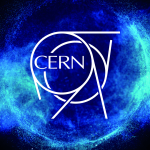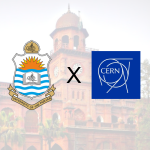Engr Hussain Ahmad Siddiqui – Chairman Rt. State Engineering Corporation
This week Pakistan is set to get formal renewal to its status of Associate Member State with CERN, the prestigious international organization of scientific research and development (R&D) based in Switzerland. The CERN Council is scheduled to hold its meeting with the agenda item, as the task force of CERN has visited Pakistan last month to satisfy itself that Pakistan meets adequately the criteria for associate membership under present conditions and environments within its R&D institutions, universities, and industry. Pakistan had become Associate Member State on July 31, 2015, the only Asian country to attain this position at that time. Pakistan ratified the status agreement with CERN on August 26, 2015.
CERN, the European Organization for Nuclear Research, has 23 Member States and 10 Associate Member States, whereas another 3 countries (and another 3 international organizations) hold the Observer status. There are about 200 universities around the world and some 300 physicists and engineers are associated with CERN for developing its various projects and conducting experiments. Since its inception in September 1954 CERN has been taking innovating and challenging initiatives in science & technology.
It’s one of the most remarkable inventions is the internet facility as the World Wide Web (www) was created at CERN in 1989. During this experiment other inventions in medical science such as CT scan and MRI also came to light.
It may be difficult to encompass fully the scope of activities and experiments that CERN is engaged in the fields of science and technology. Main area of CERN research is Particle Physics; a branch of physics that studies the nature of particles that constitute matter and radiation. In other words, CERN works for better future for mankind as it probes the fundamental structure of particles that make everything around us. Therefore, core function of CERN is to provide particle accelerators and other infrastructure needed for high-energy physics research. CERN also serves as an immense technological resource to the world through its Worldwide Computing Grid that provides global computing resources for the storage, distribution and analysis of the data generated through CERN experiments.
Also Read: CERN Short Term Paid Internship In Switzerland 2022
Pakistan Atomic Energy Commission (PAEC), which is using nuclear technology in power generation, medical science, and agriculture, is the lead organization for the Pak-CERN cooperation. Pakistan collaboration with CERN dates to 1960s, but it was formalized in 1994 when the international cooperation agreement was signed. Subsequently, Anwar Ali chairman PAEC signed a Protocol with CERN in January 2006 in Geneva. Pursuant to this agreement Pakistan provided technical & scientific support in the fields of novel accelerator, collimator, and particle detector and information technologies.
The collaboration was firmed up in June 2011 extending technical cooperation for other CERN projects too, and placement of Pakistani scientists with CERN. The document admitting Pakistan to the CERN associate membership was signed in Islamabad on December 19, 2014, by Dr Ansar Parvez chairman PAEC and the director general CERN.
This milestone has led to Pakistan’s achieving a rewarding partnership with CERN, which resulted in Pakistan’s increasing collaboration with CERN year by year, and its scientists and engineers have largely contributed to developing various CERN programs. It is regularly participating in CERN projects and experiments under the umbrella of the Joint CERN-Pakistan Committee. During these years, PAEC has carried out several successful projects with CERN involving a variety of disciplines with sophisticated technologies and precision engineering. Pakistan has effectively participated in developing the Large Hadron Collider (LHC).
Constructed during 1998-2008 by about 10,000 scientists and engineers from across the globe, it is the world’s largest, most powerful, and extensive accelerator. It consists of 27-kilometer (in circumference) ring of superconducting magnets with several accelerating structures to boost the energy of particles along the way. LHC weighs 7,000 tons, 44 meter long and 22 meter in diameter.
Also Read: Punjab University, CERN to work jointly on research projects
Estimated annual power consumption is 750 GWh (Giga Watt hours). All the controls for accelerator, its services and technical infrastructure are housed under one roof. From here the beams inside the LHC are made to collide at four locations around the accelerating ring, corresponding to positions of four particle detectors. These are ATLAS (the largest volume particle detector ever built, which is 7,000-ton in weight and installed 100-metre underground), CMS (Compact Muon Solenoid, built around the huge solenoid magnet), ALICE (A Large Ion Collider Experiment), and LHCb (Large Hadron Collider beauty, a 5,600-ton detector).
ATLAS and CMS are general-purpose detectors whereas the other two are special-purpose and dedicated. Operated normally at 4 TeV (Tera electron Volt) since 2008, the LHC has been performing since 2015 at very high energy i.e. at 13 TeV. It is now being upgraded, to be known as High-Luminosity Large Hadron Collider (HL-LHC), and will work at high luminosity, as the name suggests, and will be able to produce more data. It is scheduled for completion in 2026.
Pakistan-CERN collaboration is indeed a success story. Pakistan has fabricated and supplied eight (8) huge support-feet for the magnet of main barrel magnet of the CMS detector, other shielding walls of this detector and material for magnet itself. These 25-ton apiece magnet supports, valuing one-million Swiss Francs (CHF), were fabricated at Heavy Mechanical Complex-3 (HMC-3), Taxila. These giant supports proudly inscribes Pakistan flag.
Also Read: CERN Internship Program in Switzerland 2022 – Fully Funded
HMC-3 was awarded the best industrial partner award by the ATLAS experiment facility when President Pervez Musharraf visited CERN in January 2006 and decided to further strengthen and consolidate the collaboration. Resultantly, Pakistan/PAEC had also agreed to extend its in-kind contribution to CERN worth CHF5 million, and to US$10 million in later years. In addition, Pakistan has done significant work related to electronics, microchip design, fabrication, and data acquisition systems for CERN experiments.
It has supplied small precision microwave parts to be used in the accelerators, and saddle supports for the collimator. It was also involved in the design and manufacturing of laser alignment system and resistive plate chambers (RPCs) for use in detectors. Pakistan has supplied and installed 432 RPCs for the CMS, for which initial order of 288 numbers was won by it competing with Japan and China.
Pakistan’s membership with CERN is of great significance since it allows Pakistan to participate in the governance of CERN and attend the CERN training and career development programs. Today there are more than 75 Pakistani scientists and engineers taking part in major CERN projects and experiments.
Technology transfer is a key element of the agreements signed with CERN, and many Pakistani scientists and engineers are being educated and trained at CERN.
On the other hand, it also opens opportunities for industry to bid directly in the contracts for software design, mechanical engineering, and other supplies and services for various CERN projects. Efforts therefore shall be made at all levels of the government to exploit such opportunities in the diversified areas of advanced technology optimally within due time.
Also Read: Pakistan’s Science and Tech Minister Meets CERN Delegate
![]()





